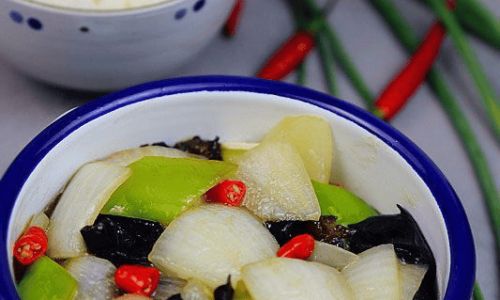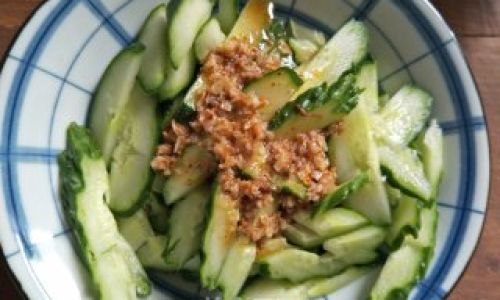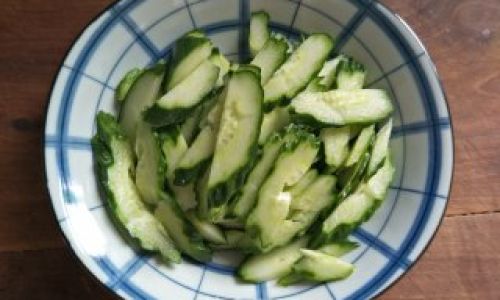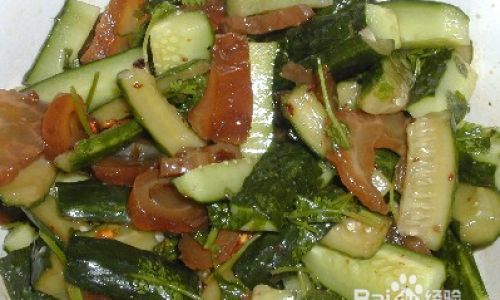Table of content
In a world where meat often takes center stage at the dinner table, the idea of preparing a meal without a trace of animal protein can feel daunting to some. Yet, culinary traditions spanning continents and centuries prove that flavor, depth, and satisfaction are not exclusive to carnivorous ingredients. The key lies in understanding and harnessing umami—the fifth taste, often described as savory, rich, and deeply satisfying. This article explores how to create meatless dishes that burst with flavor, texture, and complexity, proving that a plant-based plate can be just as, if not more, enticing than its meat-laden counterpart.
The Myth of Meat as Flavor’s Sole Provider
For generations, meat has been synonymous with hearty meals, its proteins lauded for delivering umami through amino acids like glutamate. However, this narrative overlooks a treasure trove of plant-based ingredients that naturally brim with the same savory punch. Consider the earthy richness of mushrooms, the sweet-tart tang of sun-dried tomatoes, or the briny depth of seaweed. These elements, when combined thoughtfully, can create a symphony of flavors that rival even the most succulent steak.
The secret to meatless mastery is twofold: layering and balance. Just as a painter mixes pigments to create vibrant hues, a cook can blend ingredients to achieve multifaceted taste profiles. A single dish might marry the umami of roasted tomatoes with the sweetness of caramelized onions, the freshness of herbs, and the heat of chili flakes—all without a speck of meat.
Umami: The Plant-Based Powerhouse
Umami is not a monolith; it’s a mosaic. To build meatless dishes that sing, focus on ingredients rich in glutamate and other compounds that trigger the taste buds’ savory receptors. Here are some stars of the show:
- Mushrooms: From meaty portobellos to funky shiitakes, mushrooms are umami bombs. Their high glutamate content mimics the savory quality of meat, especially when cooked down to concentrate their flavor.
- Tomatoes: Sun-dried or roasted, tomatoes offer a concentrated sweet-tart umami punch. Their natural sugars caramelize during cooking, deepening their complexity.
- Seaweed: Kombu, nori, and dulse are rich in glutamic acid, adding a briny, oceanic depth to broths, stir-fries, and rice dishes.
- Fermented Foods: Miso, tamari, and nutritional yeast bring a funky, salty-sweet umami edge. Even a sprinkle of nutritional yeast can transform a simple pasta into a cheesy, savory delight.
- Aged Vegetables: Think of the concentrated flavor of roasted garlic, the caramelized edges of charred eggplant, or the mellow sweetness of slow-cooked onions.
Cooking Techniques That Elevate Flavor
The right ingredients are only half the battle; cooking methods play a pivotal role in unlocking their potential. Here’s how to wield your kitchen tools like a flavor alchemist:

Caramelization: The Maillard Reaction’s Magic
When sugars and proteins in food are exposed to high heat, they undergo the Maillard reaction—a chemical process that creates browned, complex flavors. Roasting vegetables like cauliflower, Brussels sprouts, or sweet potatoes until their edges caramelize concentrates their natural sugars, yielding a nutty, slightly bitter sweetness. Sautéing onions until golden adds layers of depth to soups, stews, and sauces.
Smoking and Grilling
Even without meat, the smoky char from grilling or smoking imparts a rustic, campfire-like aroma. Try grilling thick slices of eggplant or halloumi cheese, then drizzling them with a balsamic reduction. The result? A dish that feels both indulgent and earthy.
Fermentation
Fermenting vegetables, beans, or grains introduces probiotics and a tangy complexity. Think of kimchi’s spicy funk, tempeh’s nutty richness, or sauerkraut’s bright acidity. These ingredients add not just flavor but also digestive benefits.
Dehydration
Drying ingredients like tomatoes, mushrooms, or herbs intensifies their flavors. Sun-dried tomatoes, for instance, become chewy, concentrated flavor packets that can elevate salads, pastas, or sandwiches.

Global Cuisines as Inspiration
Cultures worldwide have long mastered the art of meatless cooking. Draw inspiration from these traditions to expand your repertoire:
- Japanese Cuisine: Miso soup, agedashi tofu, and katsuobushi-dusted rice bowls rely on seaweed, fermented soy, and dried bonito flakes (which can be omitted for a vegan twist) to create umami-rich dishes.
- Indian Cuisine: Dal makhani, chana masala, and saag paneer use lentils, chickpeas, and spinach as bases, layered with spices like cumin, coriander, and turmeric for warmth and depth.
- Mediterranean Cooking: Ratatouille, stuffed peppers, and eggplant caponata showcase the sweetness of roasted vegetables balanced with herbs, olive oil, and acidity from vinegar or lemon.
- Middle Eastern Flavors: Falafel, hummus, and mujaddara (lentils and rice) combine earthy legumes with fresh herbs, tahini, and toasted nuts for texture and richness.
Balancing Flavors: The Four Pillars
A great dish is a carefully calibrated equation of taste and texture. To ensure your meatless creations are anything but bland, master these four elements:
- Sweet: Natural sweetness from roasted vegetables, caramelized onions, or a touch of maple syrup can temper bitterness and acidity.
- Salty: Use tamari, miso, or sea salt to enhance umami without overpowering.
- Sour: A splash of lemon juice, vinegar, or pickled vegetables adds brightness and cuts through richness.
- Bitter: Ingredients like dark leafy greens, radicchio, or cocoa powder (in mole sauces) provide complexity.
Practical Tips for Home Cooks
- Stock Up on Umami-Rich Staples: Keep dried mushrooms, tomato paste, miso, and nutritional yeast in your pantry. These items act as flavor anchors.
- Roast, Roast, Roast: Roasting vegetables concentrates their flavors. Toss cauliflower with curry powder and roast until crispy, or coat chickpeas in olive oil and smoked paprika for a crunchy snack.
- Layer Textures: Combine creamy (avocado, hummus), crunchy (toasted nuts, seeds), and chewy (grilled halloumi, seared tofu) elements to keep meals interesting.
- Experiment with Herbs and Spices: Fresh basil, cilantro, or mint can elevate a simple salad, while spices like cumin, smoked paprika, or garam masala add warmth.
- Don’t Fear Fat: Healthy fats like olive oil, avocado, or coconut milk carry flavor and add richness. A drizzle of toasted sesame oil can transform a stir-fry.
Recipes to Try
Creamy Mushroom and Sage Risotto
- Ingredients: Arborio rice, dried porcini mushrooms, vegetable broth, white wine, shallots, garlic, fresh sage, Parmesan (or nutritional yeast for vegan), olive oil.
- Method: Rehydrate porcini mushrooms in hot water. Sauté shallots and garlic, then toast the rice. Deglaze with wine, then add broth gradually while stirring. Stir in mushrooms, sage, and cheese. Finish with a knob of butter or olive oil.
Smoky Eggplant and Chickpea Stew
- Ingredients: Eggplant, chickpeas, fire-roasted tomatoes, smoked paprika, cumin, onion, garlic, coconut milk, lemon juice, fresh cilantro.
- Method: Roast eggplant until charred. Sauté onions and garlic, add spices, then tomatoes and chickpeas. Simmer with coconut milk, then blend half the mixture for creaminess. Serve over rice with a squeeze of lemon.
Miso-Glazed Tofu Bowls
- Ingredients: Firm tofu, miso paste, mirin, rice vinegar, honey (or agave), sesame oil, steamed broccoli, carrots, edamame, brown rice.
- Method: Press tofu to remove moisture, then slice and pan-fry until crispy. Whisk miso, mirin, vinegar, and sweetener for a glaze. Toss tofu in the glaze, then assemble bowls with veggies and rice.
The Health and Environmental Perks
Beyond flavor, meatless dishes offer a host of benefits. Plant-based diets are linked to lower risks of heart disease, hypertension, and certain cancers. They also tend to be higher in fiber, vitamins, and antioxidants. Environmentally, reducing meat consumption conserves water, reduces greenhouse gas emissions, and alleviates pressure on land use.
Conclusion: Rethinking the Center of the Plate
The notion that meat is indispensable for a satisfying meal is a culinary fallacy. By embracing umami-rich ingredients, mastering cooking techniques, and drawing inspiration from global traditions, any cook can create dishes that are both nourishing and irresistibly flavorful. The next time you’re planning a meal, challenge yourself to leave the meat aside. You might just discover that vegetables, grains, and legumes are not just supporting actors—they’re the stars of the show.

In the end, food is about joy, connection, and exploration. Whether you’re a committed vegetarian, a curious flexitarian, or simply someone looking to expand your culinary horizons, the world of meatless cooking awaits—bursting with flavor, texture, and the simple pleasure of a well-crafted plate.






0 comments